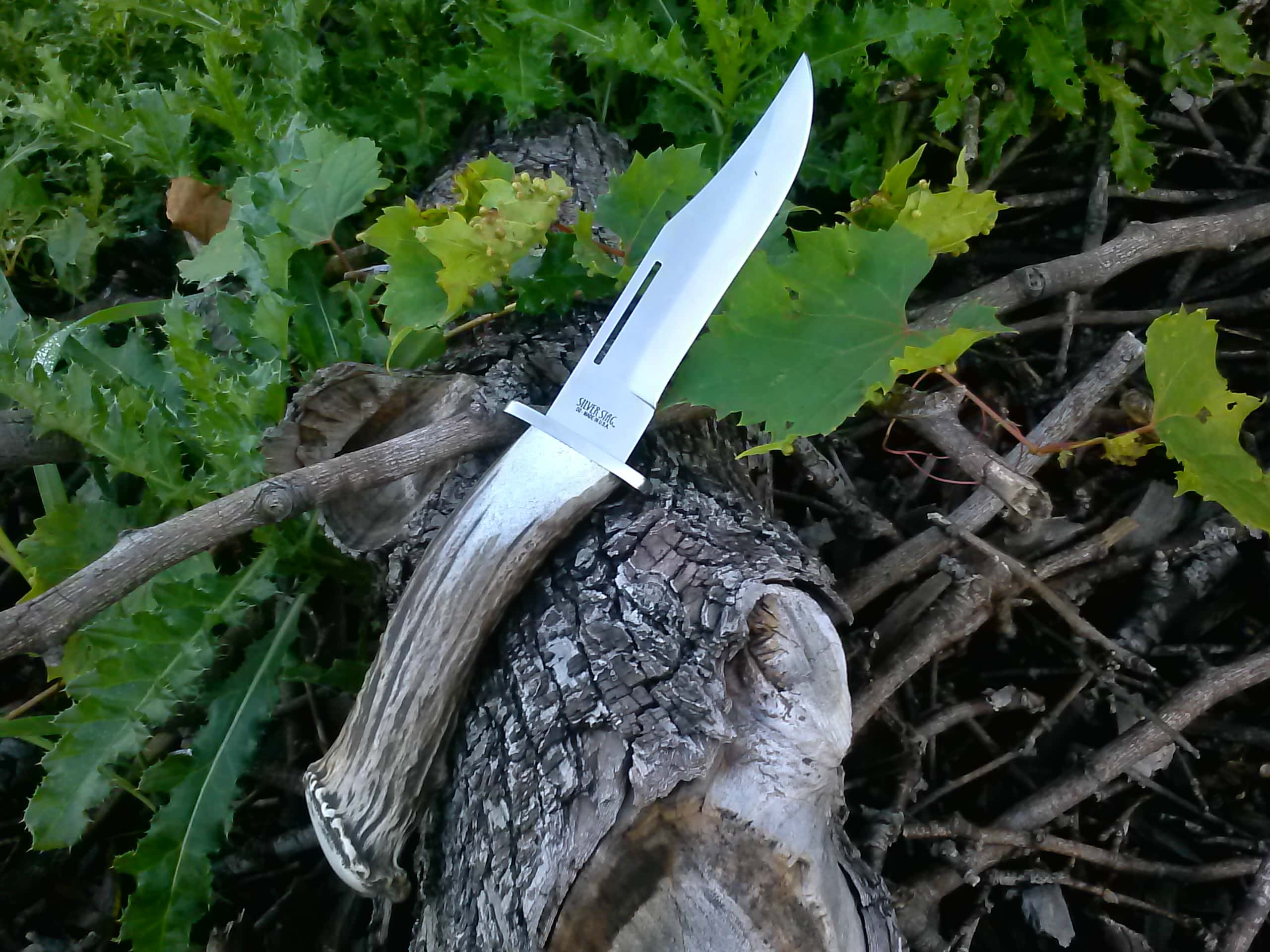5 Things to Consider Before Buying an Outdoor Knife
Daniel Xu 05.11.15

Like with any other tool, there are a number of things to consider before you buy a knife. The first thing you should ask yourself is what you’ll be using the knife for. If your answer is something along the lines of hunting, survival, bushcraft, launching them out of slingshots, or anything else outdoor-related, you may want to take a look at the list below. Before you spend your hard-earned cash on a dud, the first thing is to figure out exactly what you need.
1. Blade material

Blade material is one of the most important considerations for your hunting or survival knife, and it could mean the difference between a knife that you can keep on your hip for the next 20 years and a shiny piece of metal that breaks the first time you use it. The first thing you should be asking yourself is whether you want stainless steel or carbon steel.
Stainless steel is often cheaper, more widespread, and as its name would suggest, resistant to rust. That said, stainless steel is often less durable than carbon steel, and loses its edge much faster.
On the other hand, carbon steel can be honed to just about any type of sharpness that you desire. Keep in mind that you’ll have to take good care of these knives, or they’ll practically rust overnight. If you do decide to go with carbon steel, you might find yourself bombarded by the number of choices. As a whole, “carbon steel” covers just about anything from 1095 to 5160 Spring Steel (technically an alloy mix) knives. Odds are if you see a rough use knife and it’s not under $20, it’s made of carbon steel.
There is no right or wrong material, just different ones for different jobs. If you’re a saltwater angler, you might consider stainless steel blades due to the fact that you’ll be in a rust-prone environment very frequently. Many bushcraft and survival enthusiasts prefer carbon steel blades for their easy sharpening ability and durability. Additionally, more expensive steels may be prohibitively costly without providing any major benefits, so try out materials that you like and select the one that works best for you.
2. Blade shape

A blade’s shape decides its function, and many are specialized to a very specific job. Some knives are better for fine cutting, while others excel at rough cutting, chopping, slicing, digging, batoning, skinning, and even defensive purposes. There are also a wide range of shapes to chose from, such as drop points, spear points, dagger points, tanto, sheep’s foot, clip point, recurred, kukri-style, and the list goes on and on.
So how do you find the one that’s right for you? Well it depends once again on what you are using the knife for. For a general-purpose hunting or survival knife, you can rarely go wrong with a clip point bowie or a sturdy drop point. For chopping and bushcraft, you may want to consider a machete or kukri. The best way to find out which one suits you is to do some research and perhaps get some hands-on time with the ones that appeal to you.
3. Tang

This one is easy. Unless the knife is either very well-built or something you wouldn’t mind chucking into the trash bin after use, always get full-tang knives. This just means that the steel portion of the knife that is below the blade also extends out of the handle. Full-tang knives are usually more expensive but provide greater durability. Partial tangs, on the other hand, can be prone to breaking in half when you start chopping something hard. This is because partial tangs and rat’s tail tangs cease to exist below the handle, whereas full tang knives are a single piece.
4. Handle

A knife’s handle may change with its purpose, but in all situations you’re going to want it to be comfortable and grippy. Materials like G10 and Micarta are currently very popular, but traditional handles like wood and rubber are still in use. When you inspect a knife handle, ask yourself whether it would be comfortable for repetitive work like chopping. Would it become slippery in the rain? Is it easy to break? Does it fit your hand well?
Above all else, avoid novelty knives that store things in the handle.
5. Sheath

You can’t just carry a knife in your hand the entire time—you need something to put it in. This is called a sheath, and it will be riding on your belt for the entire duration of your trip, so you’re going to want to get something comfortable. When choosing a sheath, find one that fits your body well. Is it too long or too heavy? Will you be able to maneuver with one? Does it keep a secure hold on the knife or is the blade flopping around? Is it durable? Can you quickly draw your knife in an emergency? Is it obnoxious?
A quality sheath will be made with durable materials, and for longer knives, include a number of options for attachment. Try to avoid drop-down sheaths—there are a number of reasons why they can be useful, but they’re mostly there to look cool.
Try to keep these five points in mind before you dig into your wallet, and remember that there’s no shame in asking for help. Ask your friends or family on what kind of knives they use, and you may find that it will work for you as well.

